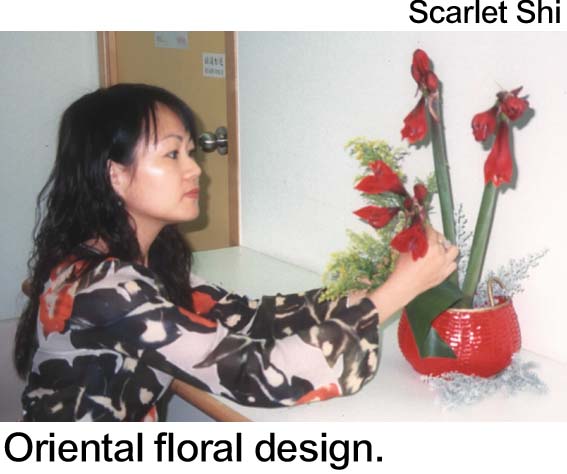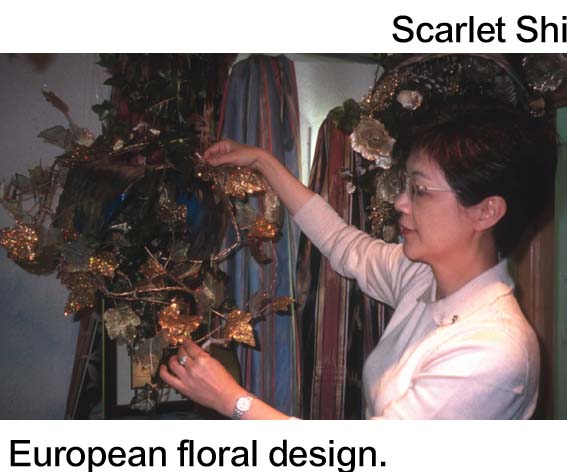Letting the flowers talk
Gordon
Lee is the president of Floral Art 2000 Club and designer of Flower Piano,
a computer software program for floral design. He described floral design as “SUN”
— for “surprise, unique and new”.
software program for floral design. He described floral design as “SUN”
— for “surprise, unique and new”.
“It is a surprise that flowers are given a new life by applying
unique techniques,” said he.
There are two basic styles of floral design. The Oriental style emphasizes
lines, whereas the European style is known as the mass arrangement because
of the large number of colorful flowers.
As a form of art, floral design is used to express feelings, to beautify
the environment, and to commemorate important rituals and observances.
In recent years, floral design has gained popularity in Hong Kong.
In Hong Kong, professional florist education is developing. Some courses
on floral design are available for hobbyists. The fees per lesson range
from $200 to $500.
According to Mr. Lee, people take up floral design for different reasons.
“Floral design helps to release pressure, and hobbyists enjoy the
course of it.”
 Letty
Lee of Wong Tai Sin, a housewife, took up floral design 10 years ago.
“I really love it,” she said. “It gives me great satisfaction
and a sense of pride. Above all, I learn to observe the details of life
and to appreciate the beauty of nature.”
Letty
Lee of Wong Tai Sin, a housewife, took up floral design 10 years ago.
“I really love it,” she said. “It gives me great satisfaction
and a sense of pride. Above all, I learn to observe the details of life
and to appreciate the beauty of nature.”
For Catherine Law, a librarian who has practised floral design for 8 years,
floral design provides relaxation.
“At first, I learned it for special techniques,” she said.
“Then I found it could relieve the pressure of work.”
Tonie Yuen, director of Elvamay Floristry Program, said, “At the
initial stage of learning, students ask the tutor what to do next. As
they evolve, they learn to communicate with the flowers, which is the
key.
“This means that students ask the flowers what to do next. They
try to help flowers to present their most beautiful side.”
Addressing the difference between the Oriental style and the European
style, Miss Yuen said that the dividing line is blurred due to frequent
cultural exchanges between the East and the West.
For people who want to start doing floral design on their own, Miss Yuen
recommended they buy materials that produce both the line and the mass
style.
“Line materials are named for their tall, thin, long and line-like
look, including gladiolus, delphinium and larkspur,” said she. “They
are used to create lines and to establish the shape of a design. Mass
materials are round flowers such as roses, asters and daisies, and they
give the design body and weight.”
The most important thing to remember is that stems should be cut underwater.
If they are cut in the air, air bubbles will be absorbed into the water
ducts of the stem. As a result, the transportation of water will be blocked
and the flowers will soon wilt.
Miss Yuen gave some advice on how to achieve stability when doing floral
design. She said that without professional tools, people will have difficulty
fixing the materials into certain positions.
To solve the problem, some green foliage such as ming fern should be prepared
in advance.
The foliage is put into the container first. The branches of the foliage
help to hold the materials in place, while the leaves above the rim of
the container establish the base of the work.
Later, the leaves in the container must be removed.
Miss Yuen mentioned two techniques that can double the life span of flowers.
“To prolong the life of flowers, renew the water and cut the stems
every day.
“People can also choose to work with dried flowers. They last forever.”![]()